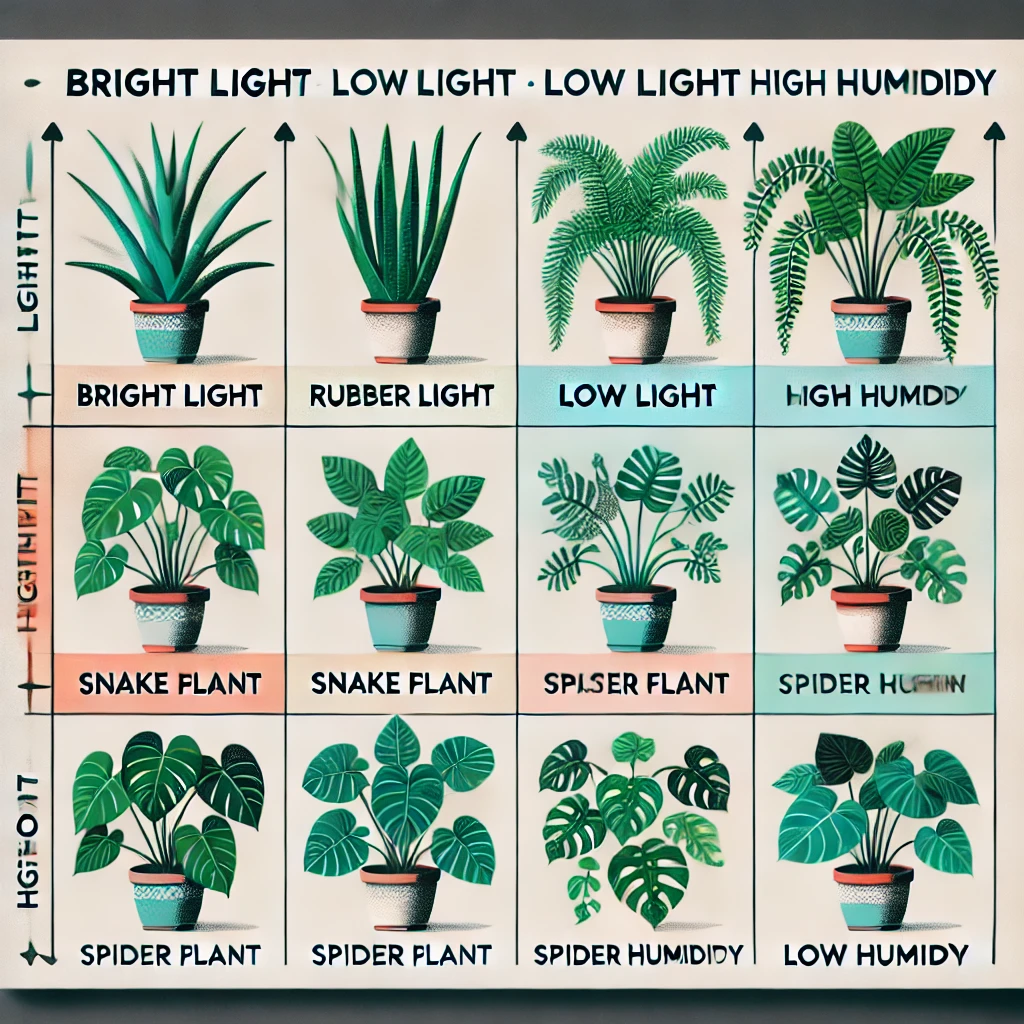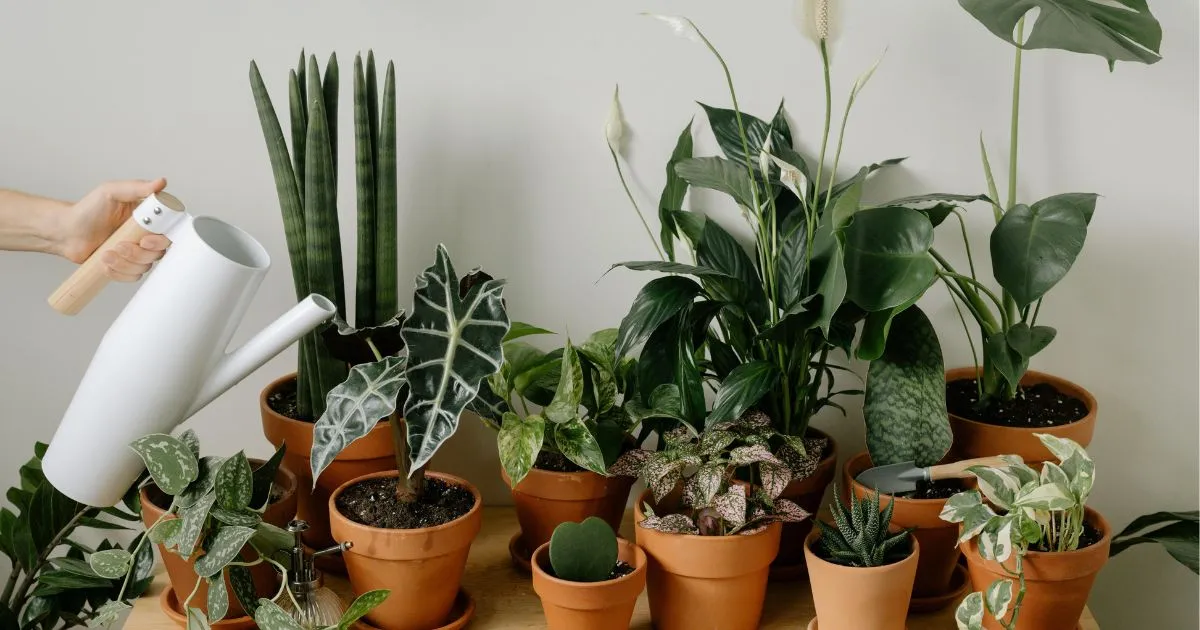Table of Contents
Plants You Can Grow Indoors: A Guide to Green Living
Indoor plants have become increasingly popular in homes and offices, not only for their aesthetic appeal but also for their numerous health benefits. They can purify the air, reduce stress, and even boost productivity. If you’re looking to bring nature into your indoor space, here is a comprehensive guide to plants you can grow indoors, along with a diagram to help you decide where each plant will thrive.
Why Grow Plants Indoors?
Indoor plants are more than just decorations; they provide numerous advantages:
- Air Purification: Many plants can filter harmful toxins from the air, such as formaldehyde and benzene.
- Stress Reduction: Studies have shown that being around plants can lower blood pressure and reduce stress.
- Improved Humidity: Plants release moisture into the air, which can combat dryness in heated indoor environments.
- Enhanced Focus and Creativity: Greenery in your workspace can increase concentration and creativity.
- Health Benefits: Plants can reduce the frequency of colds by adding moisture to the air, alleviating dry skin and sore throats.
Best Indoor Plants to Grow
1. Snake Plant (Sansevieria)
- Light: Low to bright indirect light.
- Watering: Allow soil to dry out between waterings.
- Benefits: Excellent air purifier; releases oxygen at night, making it perfect for bedrooms.
2. Spider Plant (Chlorophytum comosum)
- Light: Bright, indirect light.
- Watering: Water when the top inch of soil feels dry.
- Benefits: Removes carbon monoxide and other toxins.
3. Pothos (Epipremnum aureum)
- Light: Thrives in low to bright indirect light.
- Watering: Let the soil dry between waterings.
- Benefits: Adaptable and easy to care for; great for hanging baskets.
4. Peace Lily (Spathiphyllum)
- Light: Low to medium light.
- Watering: Keep soil moist but not soggy.
- Benefits: Known for its ability to remove toxins and its elegant white flowers.
5. Aloe Vera
- Light: Bright, indirect sunlight.
- Watering: Water deeply but infrequently; allow soil to dry completely.
- Benefits: Its gel can be used for minor burns and skin care.
6. ZZ Plant (Zamioculcas zamiifolia)
- Light: Low to bright indirect light.
- Watering: Water every 2-3 weeks, allowing soil to dry out.
- Benefits: Tolerant of neglect; great for beginners.
7. Rubber Plant (Ficus elastica)
- Light: Bright, indirect light.
- Watering: Water when the top inch of soil is dry.
- Benefits: Adds a bold, architectural look to interiors.
8. Boston Fern (Nephrolepis exaltata)
- Light: Indirect sunlight.
- Watering: Keep soil consistently moist.
- Benefits: Improves air humidity and is visually lush.
9. Chinese Money Plant (Pilea peperomioides)
- Light: Bright, indirect sunlight.
- Watering: Allow soil to dry between waterings.
- Benefits: Known for its unique coin-shaped leaves; considered a symbol of good luck.
10. Herbs (Basil, Mint, Parsley, etc.)
- Light: Bright sunlight (preferably near a window).
- Watering: Keep soil slightly moist.
- Benefits: Dual-purpose plants for cooking and air purification.
Choosing the Right Indoor Plants for Your Space
Selecting the best plants for your home depends on several factors. Start by evaluating the light conditions in your space. If you have large, south-facing windows, you can opt for light-loving plants like Aloe Vera or Rubber Plant. For dimmer areas, choose plants such as the Peace Lily or Snake Plant, which thrive in low-light conditions.
You should also consider the humidity levels in your home. Boston Ferns and other tropical plants prefer high humidity, so they do well in bathrooms or kitchens. On the other hand, drought-resistant plants like the ZZ Plant and Pothos are excellent choices for dry areas.
Finally, think about your lifestyle and how much time you can dedicate to plant care. Beginners or busy individuals might start with low-maintenance options like Spider Plants or Snake Plants. As your confidence grows, you can add more delicate species to your collection.
Placement Guide
Here is a diagram illustrating where to place these plants based on light and humidity needs:

Caring for Your Indoor Plants
1. Understand Light Needs
Each plant has specific light requirements. Place plants near windows that suit their needs or use grow lights for plants that require more sunlight than your indoor environment provides.
2. Water Wisely
Overwatering is one of the most common mistakes in indoor gardening. Before watering, check if the top inch of soil is dry. For plants like Aloe Vera, let the soil dry out completely.
3. Maintain Humidity
Many indoor plants thrive in high-humidity environments. Use a humidifier or mist the leaves of tropical plants to recreate their natural habitat.
4. Clean and Prune Regularly
Dust can accumulate on leaves, reducing their ability to photosynthesize. Wipe leaves with a damp cloth and remove any dead or yellowing foliage to keep your plants healthy.
5. Fertilize as Needed
Most indoor plants benefit from a balanced fertilizer applied every few months. Read specific guidelines for your plant species to avoid over-fertilizing.
6. Repot When Necessary
As plants grow, they may outgrow their pots. Repotting every 1-2 years ensures they have enough room for their roots to expand and thrive.
Unique Ideas for Indoor Plant Displays
- Vertical Gardens: Utilize vertical space by creating a green wall with climbing plants like Pothos or herbs.
- Terrariums: Create miniature ecosystems in glass containers for succulents and air plants.
- Hanging Baskets: Hang Spider Plants or Boston Ferns to add greenery without taking up floor space.
- Plant Stands: Use multi-tiered stands to display plants of various heights for a dynamic look.
- Bookshelf Greenery: Place smaller plants like the Chinese Money Plant or succulents on bookshelves to add charm.
Conclusion
Bringing plants into your indoor spaces can transform your environment into a healthier, more vibrant haven. Whether you’re a beginner or a seasoned plant enthusiast, the options listed above cater to various needs and preferences. Start small, learn as you go, and enjoy the myriad benefits that indoor greenery brings to your life. With thoughtful selection and care, you’ll soon create an indoor garden that thrives and enhances your living or working space.

